Art World
Activists Brought a Trojan Horse to the British Museum and Camped Out in the Galleries Overnight to Protest BP’s Sponsorship
An estimated 1,500 people turned out to protest the museum's ties to fossil fuels.
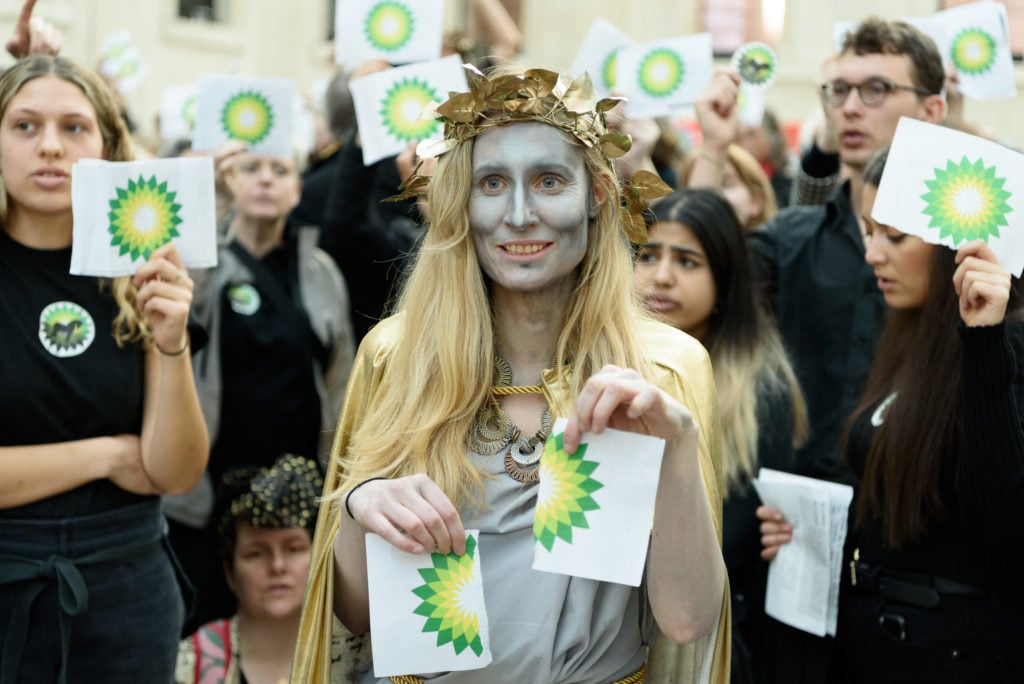
An estimated 1,500 people turned out to protest the museum's ties to fossil fuels.

Naomi Rea

An estimated 1,500 people took to the British Museum over the weekend to protest the museum’s continuing ties with the oil giant BP. Climate activists chanting “BP must fall” occupied the museum overnight on Friday and Saturday in what is likely the largest protest the museum has ever faced. The museum itself estimated the crowd at closer to 1,000; a spokesperson characterized the events as “peaceful and good natured.”
Still, the museum’s director Hartwig Fischer said in a statement that the action “is not a contribution to solving the climate crisis.” Fischer has repeatedly defended the museum’s continued relationship with BP for financial reasons.
This latest protest against the oil company began on Friday after activists from the group BP or not BP? snuck a 13-foot-tall Trojan Horse into the museum’s courtyard. Their target was the museum’s current “Troy: myth and reality” exhibition, which is sponsored by BP. “Like the legendary Trojan Horse, BP’s sponsorship is not a gift but a cynical way to hide something far more sinister and destructive,” Sarah Horne, a member of BP or not BP?, said in a statement.
The Trojan Horse was guarded overnight by two activists sleeping inside of it. On Saturday, those activists were joined by an estimated 1,500 protesters. The activist group is known for its many previous theatrical interventions in the British Museum. This was the group’s most elaborate action to date, with activists organizing talks and performances across the museum, urging it and its trustees to sever ties to the fossil fuel industry.
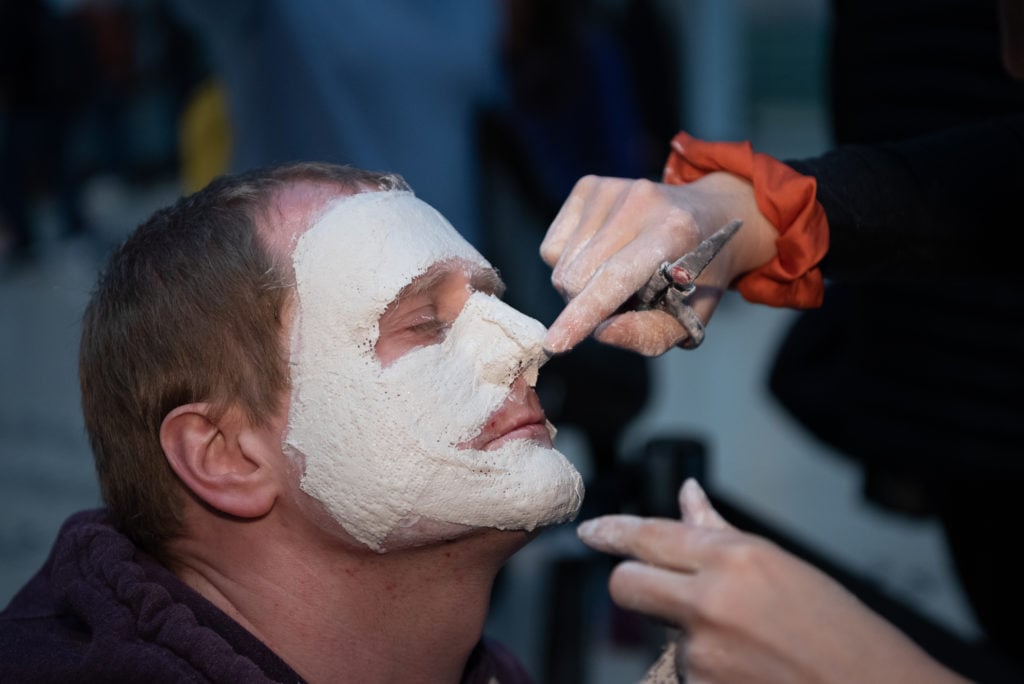
Photos of the mass action at the British Museum by Ron Fassbender.
The activists this past weekend relabelled museum objects, chanted, sang, and ripped apart images of the BP logo. For a performance they dubbed Monument, protestors made plaster casts of the arms and legs of participants. Some 60 people occupied the museum itself on Saturday night.
Kurdish and Turkish activists were among those to address the crowd, criticizing BP’s controversial pipeline projects near the site of ancient Troy. Another of the protesters, Mamadou Mane, from the Senegalese civil society group Aar Li Nu Bokk, spoke about BP’s complicity with corruption in Senegal, paying huge sums in exchange for new drilling licenses. “With the British Museum still holding artifacts that were once looted from the African continent, it is perhaps no surprise to see it celebrating and defending an oil company that shows the same colonial attitude today,” Mane said in a statement.
Pressure has been mounting on the museum to sever ties with the oil company after the National Galleries Scotland and the Royal Shakespeare Company cut links with BP last year. Ahdaf Soueif, a British Museum trustee, also resigned in 2019, citing the controversial partnership as one of her reasons.
The PCS union, which represents workers from the UK’s cultural institutions, has issued a statement cosigned by Soueif calling on the institution to end its relationship with BP and follow the lead set by the UK parliament and Tate by declaring a climate emergency. “From flooding in Mozambique to wildfires in Australia, new images appear every day to drive home what scientific evidence has long made clear: the climate crisis is here, and urgent, widespread action is needed to minimize the devastation being wreaked on people’s lives.”
British Museum director Hartwig Fischer said in a statement that the museum respects people’s right to express their views, and shares the protester’s concerns about climate change. However, he doubled down on the importance of the institution’s continued relationship with BP. “The British Museum offers for millions of people an extraordinary opportunity to engage with the cultures and histories of humankind. Without external support and sponsorship this would not be possible,” Fischer said. “Removing this opportunity from the public is not a contribution to solving the climate crisis.”
See more images from the mass protest action below.
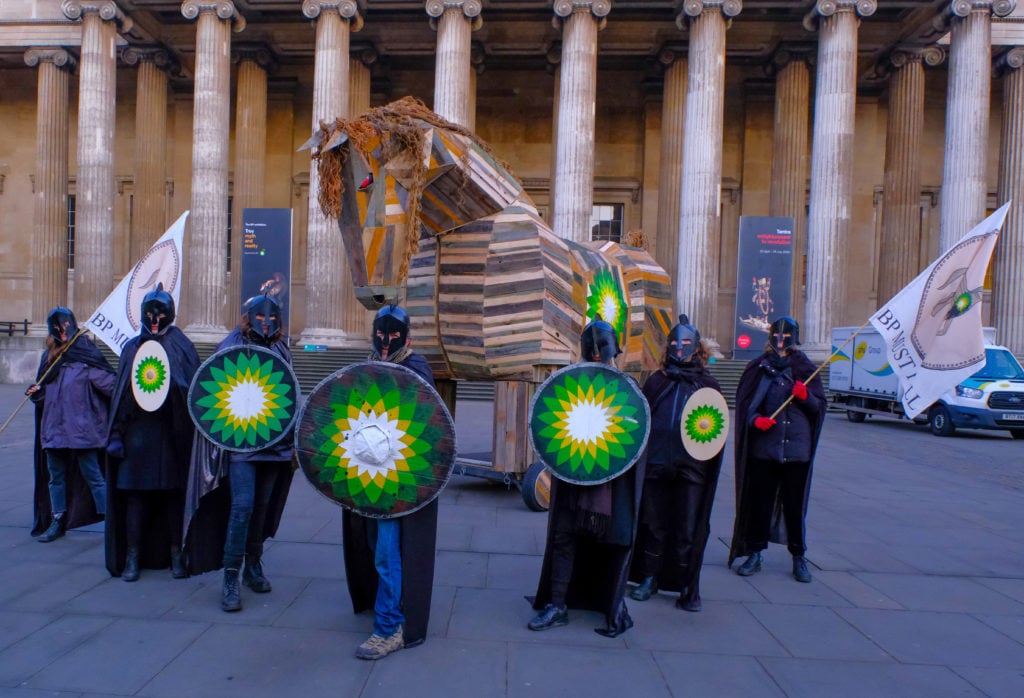
Protesters bring a BP Trojan Horse to the British Museum. Photo by Hugh Warwick.
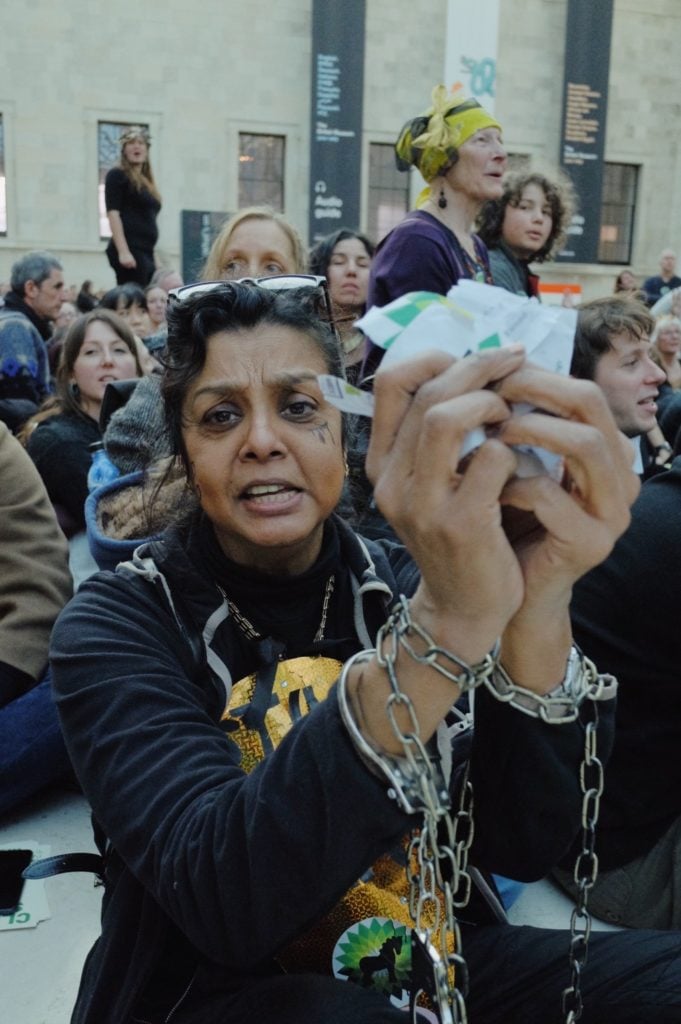
Photo of the mass action at the British Museum by Amy Scaife.
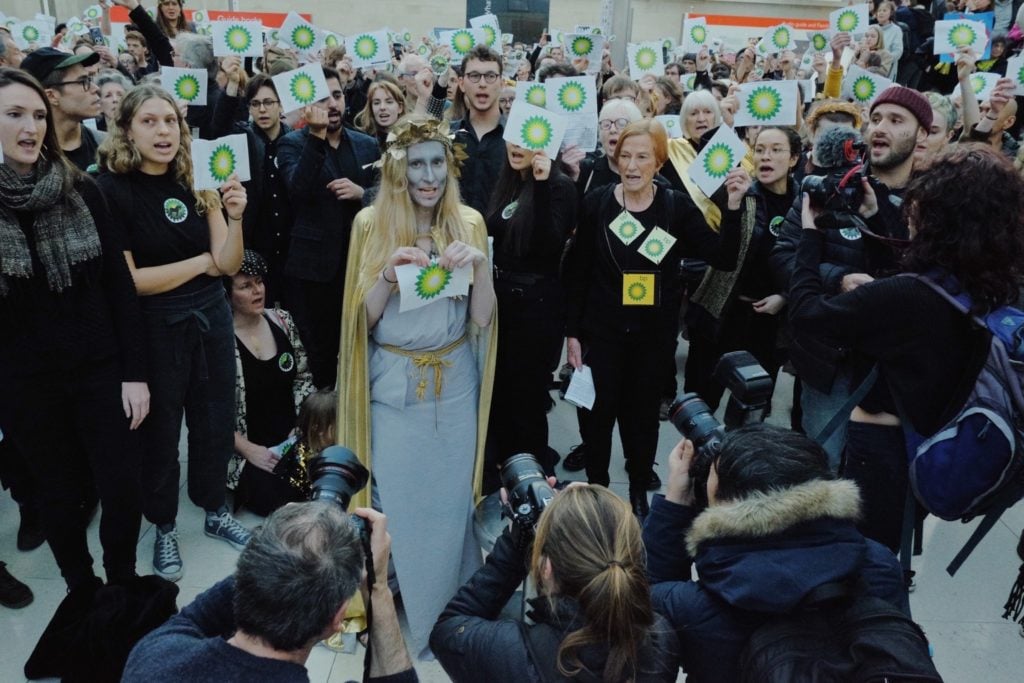
Photo by Amy Scaife.
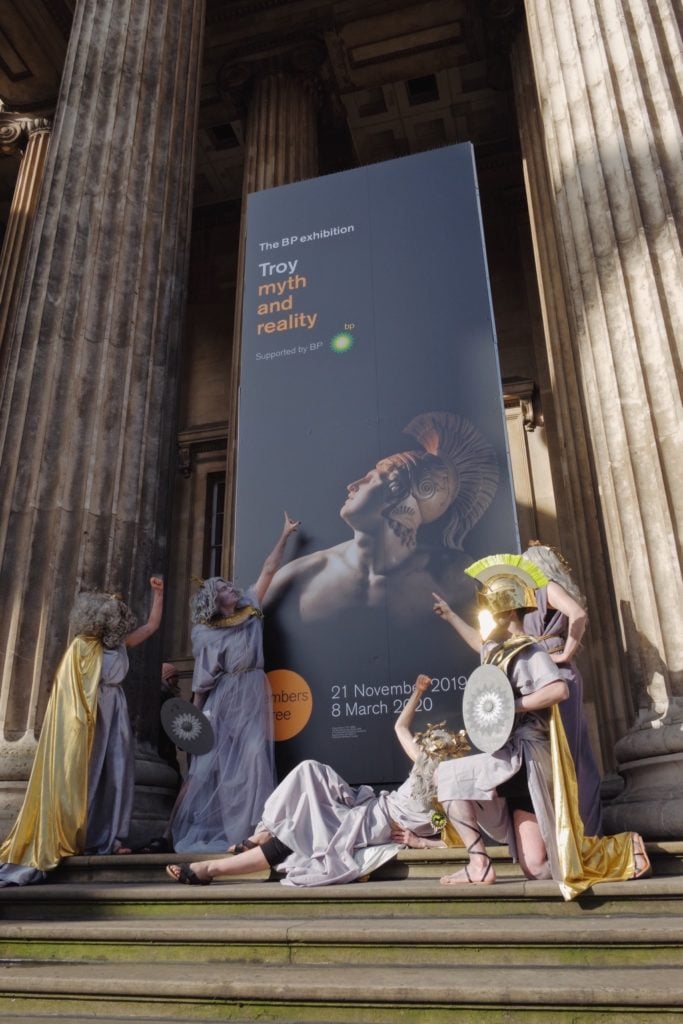
Photo by Amy Scaife.
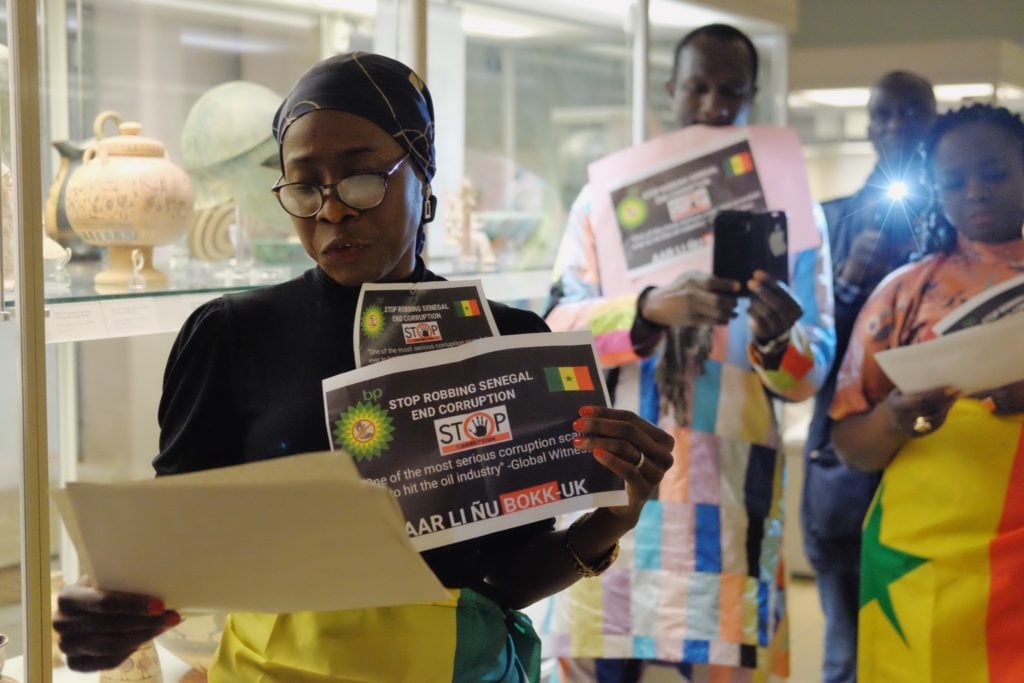
Photo by Amy Scaife.
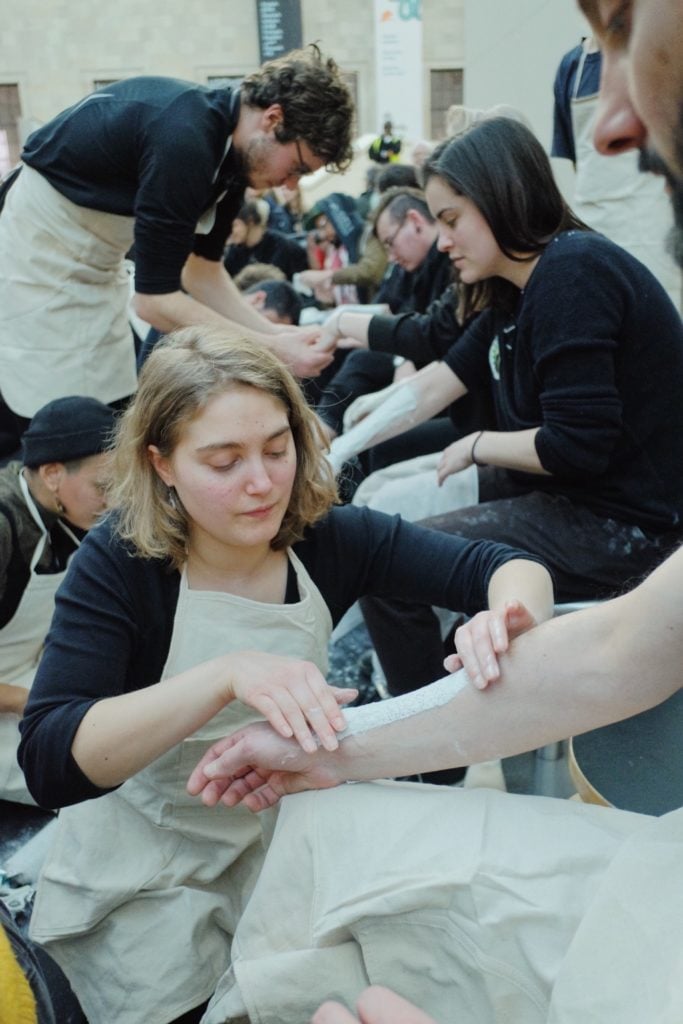
Photo by Amy Scaife.
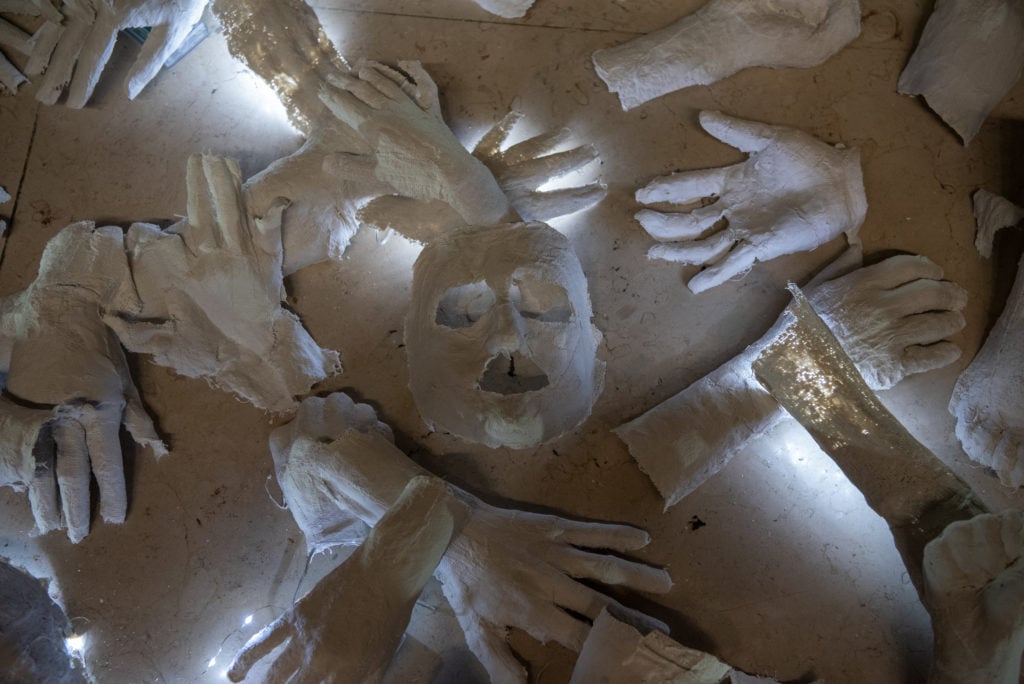
The activists’ Monument sculpture. Photo by Ron Fassbender.
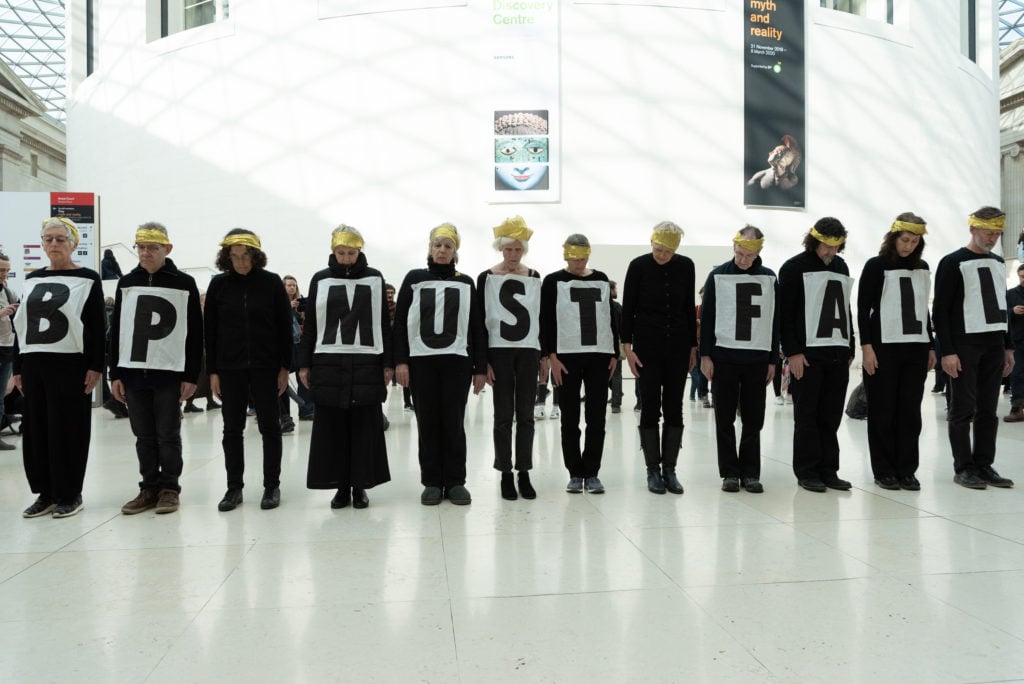
Photo by Ron Fassbender.
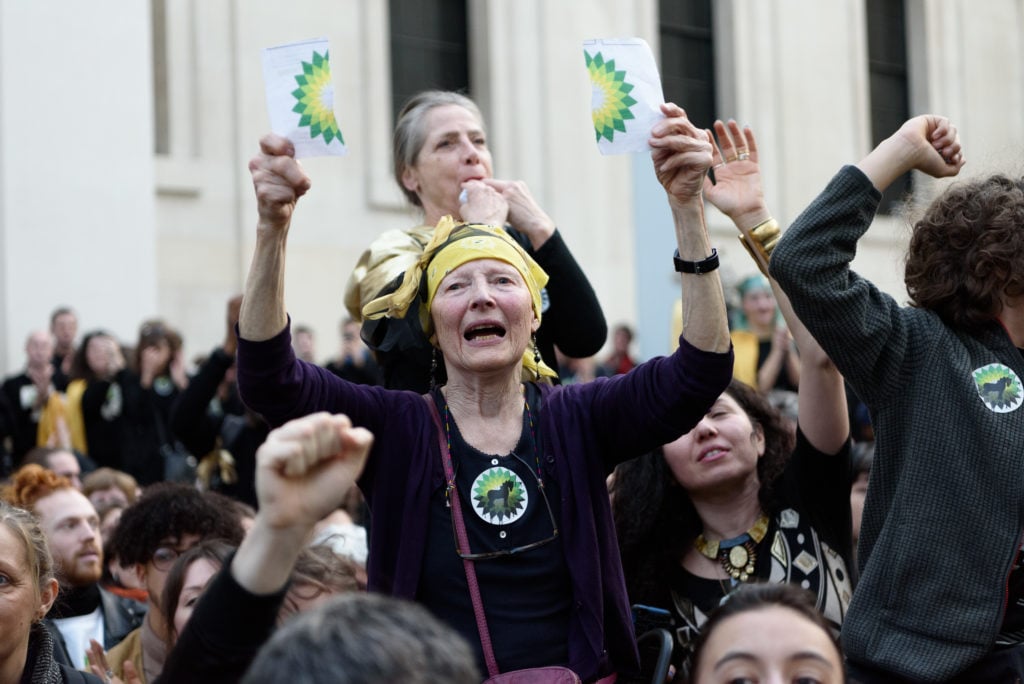
Photo by Ron Fassbender.